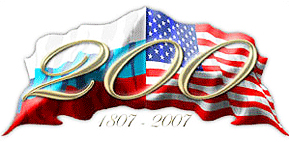Americans in the USSR: Changing Hearts and Minds in the Midst of the Cold War (excerpt)

(Kennan Institute – wilsoncenter.org/program/kennan-institute – Izabella Tabarovsky, Senior Associate, Manager for Regional Engagement at The Kennan Institute – July 24, 2017)
This blog is a short version of a Wilson Quarterly article Walking in Each Other’s Shoes:
wilsonquarterly.com/quarterly/the-lasting-legacy-of-the-cold-war/walking-in-each-others-shoes-through-the-iron-curtain-and-back/
For interview excerpts with the guides, please see and “A Tribe of the Exhibit People: American Guides Recall Soviet Journey”:
wilsonquarterly.com/quarterly/the-lasting-legacy-of-the-cold-war/a-tribe-of-exhibit-people-american-guides-recall-soviet-journey/
In my Siberian hometown of Novosibirsk, the chances of walking out onto the street in 1977 and running into a living, breathing American were virtually nil. The Soviet Union, which would start to unravel a short eight years later, seemed as solid as ever. Just over a generation separated the country from the peak of an orgy of mass repressions. While society was starting to open up, fear still hung in the air.
And yet, a group of some thirty Americans came to Novosibirsk that summer 40 years ago. They were guides and professional staff of the Photography USA exhibit, one of many such exhibits put together by the United States Information Agency (USIA). For a full five weeks, they walked the streets of the city in the open, and they could be touched and talked to. It was even possible to invite them over to dinner at your apartment, and if you did, they would likely have accepted the invitation.
The exhibit had much to offer. In the visually austere Soviet environment, the images lining the walls aimed to fascinate and impress. The latest achievements in American photographic technology were on display, as well as a variety of subjects, including underwater fashion photography, time-delayed shots of a flying bullet, and artistic semi-nudes that would have raised the hackles of a Soviet censor.
Still, none of these compared to the most fascinating exhibit of all: the guides who accompanied the show. It was these young, friendly, outgoing Americans, who day in and day out demonstrated the equipment and answered Soviet visitors’ eager questions, who were the primary attraction. No question was off limits, from the most innocently ignorant (“Do American cows have false teeth?” “Is it true that American women can have a child in five months?”) to the hostile (“Why are you bombing our sailors in Vietnam?” “Why do you kill black people?”).
By the time Photography USA arrived in Novosibirsk, USIA had been sending exhibits to the Soviet Union for nearly 20 years. The exhibit program that developed over that time was elaborate, well-organized, and well-funded. Toward the end of the program, one former USIA official estimated, it cost some $20 million to put an exhibit together, ship it overseas, and show it on a typical six-city tour. In all, over 17 million Soviet people are estimated to have seen the exhibits, and the impressions of each lingered and reverberated. Today, there are chat rooms on the Internet where Russians still talk about the impact the exhibit had on them.
Craving Human Contact
As fascinating as the technology and material objects on display at the exhibits was, it is fair to say that it was human contact that people craved the most and that left the deepest impression. Isolated from the rest of the world, Soviet people wanted to know what life was like on the other side of the Iron Curtain. With their questions, they tested every one of the assumptions, shaped by Soviet propaganda, that they held about the United States. But more than anything, they wanted to satisfy the basic human urge to get to know another person, to swap life stories with a stranger, to learn about others’ experiences, and make new friends.
Both the American guides and the Soviet visitors saw each other’s country and the other as exotic and enchanting, though for entirely different reasons. Young Americans were fascinated by the austere environment of Soviet cities, where the only commercial signs on the buildings were the generic “Meat,” “Bread,” and “Fabrics.” Some were charmed by the decaying chic of the Moscow Metropol Hotel and the legendary poor service in Soviet restaurants. The red-lettered “exhortations” on the buildings urging Soviet citizens toward greater socialist achievements left a lasting impression on others.
Many Soviets visitors, on the other hand, were intrigued by the fact that the female guides, most of whom were in their 20s, were not married and did not have children. In a country obsessed with the nationality question since the 1917 revolution, they endlessly probed the guides’ ethnic origins. Some guides recalled that saying they were American was not enough. Their interlocutors wanted to get to the roots of their heritage, to decipher the meaning of a guide’s dark curls or “oriental” facial features….
